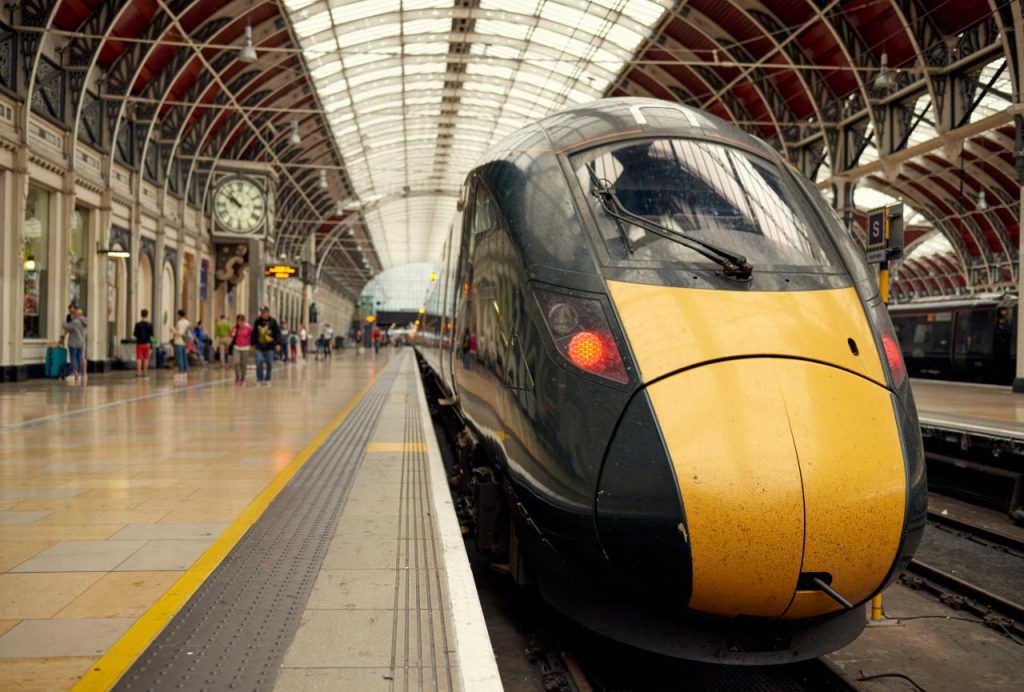Buenos Aires has a fairly efficient and safe subway (SUBTE) system with a length of 46 km and 80 stations.
The Buenos Aires Metro (called Subte in Argentina, short for “subterráneo” which means underground in Spanish, which is the equivalent of underground in English) serves the city of Buenos Aires, Argentina.
It was opened in 1913, making it the oldest in South America and the Southern Hemisphere. After rapid growth at the beginning of the century, the expansion of the network stagnated for 60 years. Now it has resumed, since the last years of the 20th century, and projects are accumulating.
General information
The Buenos Aires subway was inaugurated in 1913 with only Line A. It is currently a tourist attraction in the city, as it still preserves, practically unchanged, the La Brugeoise trains of that time, now almost a century old. Line B is the only one with a third rail power supply system, while the other lines are powered by overhead catenaries.
None of the lines are equipped with pneumatic tires.
After being a state-owned service since the 1940s, it was privatized on January 1, 1994, and is operated by Metrovias S.A. The concession contract is valid until the end of 2017.
The operating schedule of the metro depends on the day of the week: from Monday to Saturday it operates from 5 to 22:30, while on Sundays and holidays it operates from 8 to 22.
The fare, always the same, is 0.7 Argentine pesos in 2006, which is extremely cheap (0.18 euros at the official exchange rate of October 2006, which was one peso for 0.25457 euros. At purchasing power parity, however, this amounts to about 0.55 euros, which is still cheap).
Designed at a time when cars were rare, the metro system perfectly connects the stations, from which a series of suburban lines radiate, and the city center as well. However, it has few links to the network of urban highways that have since blossomed in the metropolitan area, and not a single station in the suburbs, forcing many workers in the greater Buenos Aires area to use sometimes more expensive (cars) and/or always polluting and slow means of travel to get to the city center for their work. The low number of passengers (more or less 250 million) compared to the Paris metro (1 billion 300 million) is proof of this.
Ticket price
The metro ticket was worth 1.1 peso (ARS) or 0.293 USD or 0.210 EUR (June 2009).
Lines
The network consists of 5 lines in service (from “A” to “E”) covering 41.9 km. This is very little for a city of more than 12 million inhabitants and its suburban area, which is also densely populated. Fortunately, there is also a line under construction (“H”) that is scheduled to open in 2007, and a surface line called the premetro (in fact, a tramway with its own right-of-way). But the premetro line does not attract many people (barely 2 million 850 thousand passengers in 2003) and its ridership is stagnant. In addition, three lines are being planned, which were included in a law passed in 2001 (“F”, “G” and “I”)
- Line A Opened on December 14, 1913, 6.8 km and 14 stations.
- Line B Opened on October 17, 1930, 10.0 km and 15 stations.
- Line C Opened on November 9, 1934, 4.3 km and 9 stations.
- Line D Opened on June 3, 1937, 11.0 km and 16 stations.
- Line E Opened on June 20, 1944, 9.6 km and 15 stations.
- Line F (project)
- Line G (project)
- Linea H (under construction) Scheduled to open in mid-2007, 3 km and 5 stations in the first stage. 11 km and 16 stations in total.
- Linea I (project) Opened August 27, 1987, 7.4 km.
What are the different lines?
There are three types of lines: S, R and T. The S lines are the oldest, operating in the city centre and in Palermo. The R lines operate in the suburbs and the T lines are the newest, operating in the city centre and in Palermo.
How much does it cost to ride?
There are several types of tickets.
- The most common is the “Billete Único” (single ticket), which costs $3.
- The “Billete Compartido” (shared ticket) costs $5 and is valid for two hours.
- The “Billete Multicompartido” (multi-use ticket) costs $10 and is valid for up to six hours.
What are the benefits of using the Buenos Aires Underground?
The Buenos Aires Underground has a lot of benefits, one of them is that it is very close to the city centre. Another advantage is that it is a very safe system.
What are some of the unique features of the Buenos Aires Underground?
The Buenos Aires Underground is a unique system in the world. The system has its own station numbering system and uses a different type of electrical supply.
What are some of the challenges that the Buenos Aires Underground faces?
The Buenos Aires Underground is quite old and in need of major expansion. The network consists of only three lines, which means that it is limited to certain areas and cannot serve all the needs of the city.
What are some of the future plans for the Buenos Aires Underground?
The Buenos Aires Underground is a great addition to the metro system of Buenos Aires. The new underground lines will provide more capacity and better connections, especially in the city centre. The expansion of the network will also allow for more frequent services.
What is the history of the Buenos Aires Underground?
The Buenos Aires Underground is a public transport system in Argentina. It consists of a network of underground lines, with the majority of them located in the city centre and surrounding areas. The network was opened in 1919 and has been expanded several times since then.
